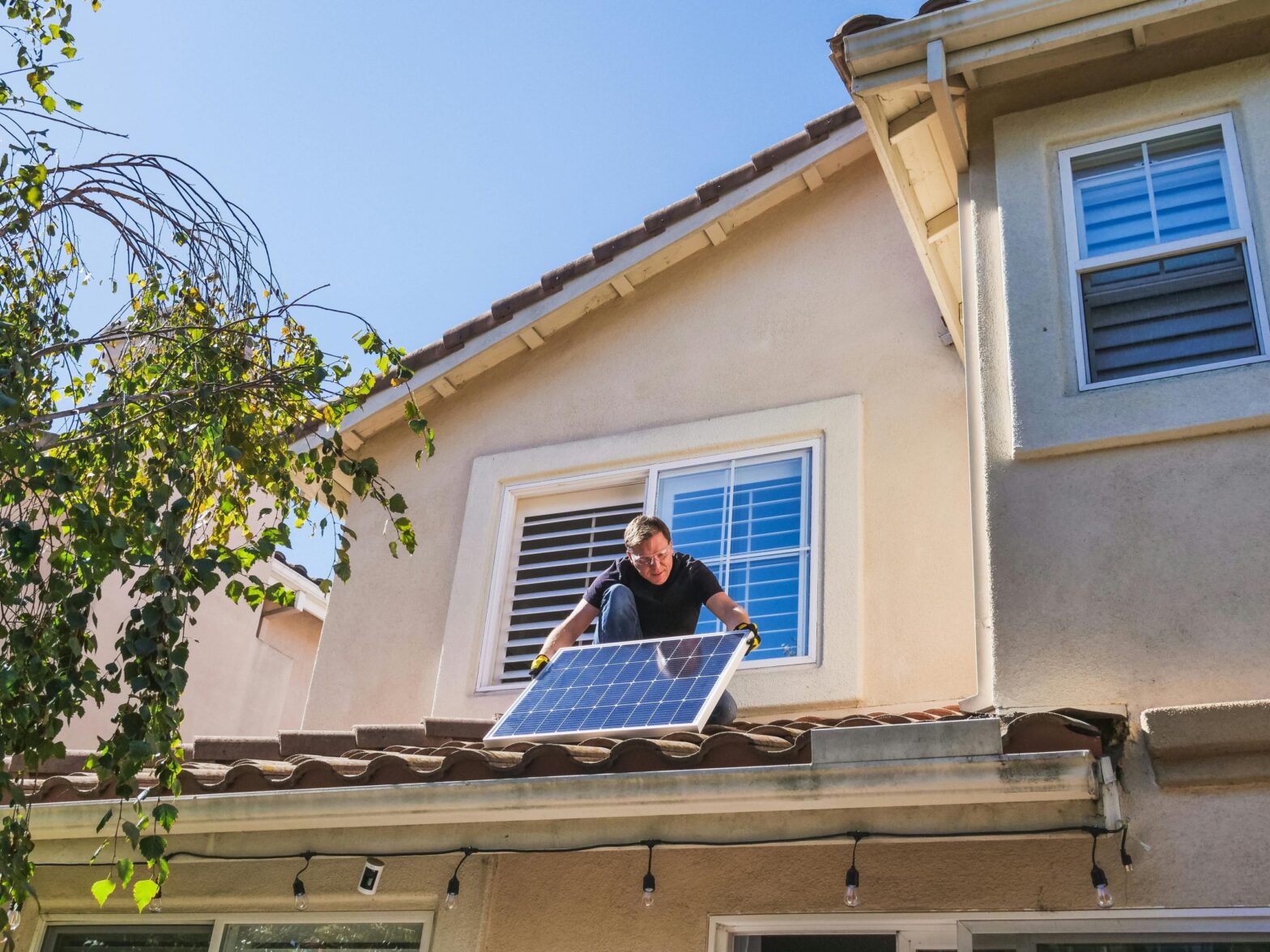Sustainability is no longer just an option; it is a necessity. With challenges such as fossil fuel depletion, rising energy costs and increasing environmental pressures, making smarter decisions at home has never been more important. The good news? Small changes can lead to big results.
Wondering what these little changes are?
Relax – we are here for you! In this post, we have highlighted some of the most effective ways to make your home more eco-friendly. These practical steps are simple, effective and easy to follow.
Ready for a positive change? Read on until the end.
Install solar panels
Switching to renewable energy will fundamentally change your home – and it's easier than you might think. Solar panels use the sun's energy to power your home, meaning lower utility bills and a smaller carbon footprint. In fact, homes with solar panels can save between $1,000 and $1,500 per year on energy costs. But that's not all – 2025 offers numerous government rebates and incentives to cover installation costs, making the switch more affordable.
And if installing a full system is too much for you, you can start small. Solar-powered outdoor lights or water heaters are affordable options with a noticeable impact.
By taking this step, you won't just save money – you'll also be investing in a greener future for your home and contributing to a cleaner planet. Why not let the sun work for you?
Collect and use rainwater
Collecting rainwater is a simple and effective way to save water at home. By installing a simple rain barrel, you can collect water from your roof on rainy days and use it for non-potable purposes, such as: for watering your garden, washing your car or cleaning outdoor areas.
The benefits add up quickly—according to the EPA, a single rain barrel can save up to 1,300 gallons of water during the peak summer months. This will help you reduce your water bills and reduce the strain on local water supplies, especially during dry periods.
The best part? Rainwater harvesting systems are inexpensive and easy to maintain. With a small investment, you can significantly improve your home's water consumption and contribute to a more sustainable life. It's an easy way to make your home eco-friendly and resource-efficient.
Monitor your distillate consumption
The efficient use of distillates such as heating oil or diesel is essential for sustainable heating and energy management in houses. Without proper monitoring, you may use more fuel than necessary, resulting in higher costs and greater environmental impact. Installing a fuel tank monitor will help you keep track of your distillate levels. It can also be notified immediately of unusual consumption peaks, allowing you to identify potential problems early.
In addition to monitoring, choose a heating oil service provider that offers environmentally friendly fuel options such as low-sulfur fuels. These options burn cleaner, produce fewer emissions, and still keep your home warm.
By combining smart monitoring with greener fuel options, you can reduce fuel waste, reduce energy costs and contribute to a more sustainable lifestyle. It's a small step that ensures efficient heating while minimizing your environmental impact.
Improve insulation and seal air leaks
Good insulation is essential for a comfortable home. When your home is poorly insulated, heat escapes, causing your heating system to work harder. This increases your energy costs.
Sealing air leaks around windows, doors, and ducts can prevent heat loss. Environmentally friendly insulation materials like recycled cotton or spray foam can improve your home's energy efficiency.
According to energy efficiency studies, sealing air leaks and improving insulation can reduce heating and cooling costs by 15 to 20%. This is a practical way to reduce energy consumption and make your home more sustainable.
Use energy efficient appliances
Outdated devices consume a lot of energy. Replacing them with energy efficient models can make a big difference. Look for Energy Star-certified products that use up to 25% less energy than older models.
For example, switching to an energy-efficient refrigerator or washing machine can reduce your monthly electricity bills. Additionally, smart plugs and timers can prevent “phantom” consumption when devices are not in use.
Investing in energy-saving appliances will help you save money, reduce overall electricity needs, and make your home environmentally friendly.
Choose sustainable furniture and decorations
Your furniture selection can also contribute to sustainability. Choose pieces made from sustainable materials such as bamboo, reclaimed wood or recycled metals. These materials are durable, stylish and better for the planet.
You can also use air purifying houseplants to naturally improve indoor air quality. Plants like peace lilies and spider plants are easy to care for and absorb pollutants indoors.
You create a healthy and environmentally friendly living space by choosing sustainable interior design. This small step supports sustainable manufacturing practices and helps reduce landfill waste.
Diploma
Sustainable living starts with small changes. The above points will help reduce your bills and reduce your environmental footprint. The impact of these small actions adds up over time. Start with one change and build it gradually. Your efforts will benefit the environment and create a more comfortable and cost-effective home for you and your family.
